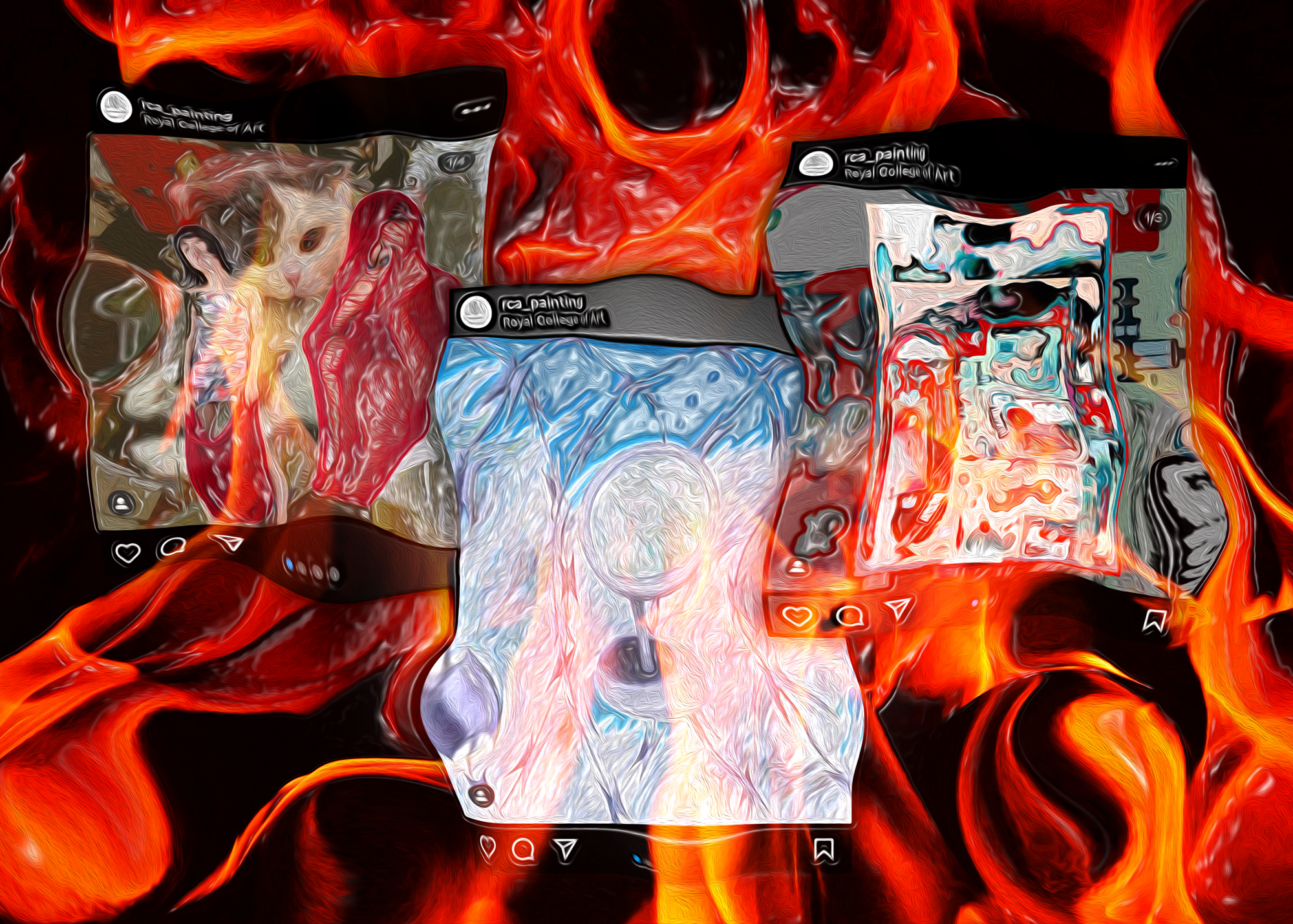
Working in her studio during a recent long weekend, the last thing artist Sophie Goodchild anticipated was finding herself suddenly excommunicated from Instagram. Without warning, the final year Royal College of Art student’s account was disabled. Panic ensued. Sophie was at a loss to understand what had happened. How could her feed, mostly a collection of updates detailing her vibrant sculptural and painting practice, contain anything that would trouble the social network’s moderators?
As her pleas for reinstatement fell on deaf ears, the consequences of losing her account and its thousands of followers loomed into view. Like so many artists today, Sophie depends on the platform to help sustain her professional livelihood. But six weeks out from her degree show (the culmination of two years of work, much of it made in the shadow of the pandemic and months of lockdown) the loss of her Instagram account seemed particularly egregious.
Sophie’s experience underscores the sometimes insidious and seemingly arbitrary ways Instagram can treat the creative professionals who rely on it to showcase their work. In this day and age, it is admittedly hard to avoid using Instagram, but the nature of this relationship poses real questions—of artistic agency, corporate control and even a burgeoning aesthetic—that aren’t easily answered.
“Sophie’s experience underscores the sometimes insidious and seemingly arbitrary ways Instagram can treat creative professionals”
For good or ill, emerging artists use Instagram to promote their work and get the attention of galleries, collectors and residencies. In return, Instagram gets troves of free content and data that it can monetise for its parent company, Facebook. On one level, the benefits offered to emerging artists by Instagram seem obvious. Instead of toiling away in obscurity like our analogue predecessors, social media gives artists access to a wider art-world community and with it a tantalising possible route to recognition and even success.
There is no doubt that sometimes this works. Communities do flourish on the platform, and participating in a real-time networked space of artwork images, criticism and studio documentation does provide a durable milieu that helps many artists retain their momentum and equilibrium in a profession that can be hard to sustain.
But, given the numerous cases like Sophie’s, how equal is that relationship, really? Signing up to Instagram means accepting a set of terms and conditions that make it clear who is the chief beneficiary of the exchange. For a business that depends on constant user engagement to generate reams of sellable data, having artists take up a permanent roost on one of its platforms is nothing short of a coup for Facebook.
However, it doesn’t take long for anyone who starts actively using Instagram to discover the hidden costs of the exchange. The algorithm’s seductive interplay of affirmation and denial inevitably leaves all but the stone-hearted among us chasing likes. And as more and more of us coordinate our artistic practice with our Instagram feed, that carries with it some serious implications for artistic autonomy.
“The algorithm’s seductive interplay of affirmation and denial inevitably leaves all but the stone-hearted among us chasing likes”
When a social network’s presets set the parameters through which a work is reproduced and then received, the way that work is made will invariably be affected. Future art historians will no doubt be better placed to judge whether Instagram Art is now the dominant mode in, say, contemporary painting. What is undeniable, though, is that for artists who do use it to show their work, considering whether an image played well when posted on Instagram is not always helpful or conducive to the making process.
Defenders of the status quo may say these kinds of criticisms are at best misplaced, and at worst, antediluvian. After all, the artistic ego is no stranger to insecurity and the desire for recognition, while apps like Instagram are really just the latest in a long line of publishing tools that artists stretching back to Dürer have seized on to raise their profile. But even accepting this means reckoning without the troubling corporate behemoth that lies behind Instagram’s cheerful frontage. Big Tech’s logic of capitalist accumulation seems to be leading to what the academic David Golumbia calls “a relentless corporate drive towards a neutralisation of information”.
On Instagram, that can manifest itself as censorship. Stories abound of artists whose work has fallen afoul of moderators, often for sharing images that even the most hidebound galleries wouldn’t shy away from showing. And in wider society, as Sophie herself points out, sex workers, BIPOC and queer communities are often among those most disproportionately affected by deactivation. In Sophie’s case, her Instagram account was eventually returned to her. However, she has yet to be told why it was taken away in the first place.
Alexis Flynn is a painting student at the Royal College of Art





